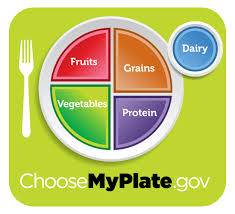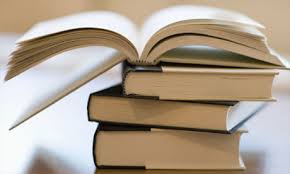Grade 3
Nutrition and Fitness
Click Here for Popplet
Standard 6
The students will understand how a healthy diet and exercise can increase the likelihood of physical and mental wellness.
Objective 2
Identify nutrient groups and the key functions of each. Identify nutrient groups; i. e. , proteins, fats, water, carbohydrates, vitamins, minerals. Name foods rich in key nutrients. Define the functions of basic nutrient groups.
Ed Tech Standards: Standard 8
Use technology resources (e.g., calculators, data collection probes, videos, educational software) for problem-solving, self-directed learning, and extended learning activities.
I used Popplet for this lesson. It was easy to use and shows a mind map of all the information. I like using this tool. I will be using this tool again in the future.
To be taught over a few weeks. In my lesson I will start by asking my students what nutrition is and what are the nutrients groups. I will show the Popplet and we will discuss each group in detail, like below, and list foods that are rich in the nutrient that we are discussing. We will learn about how exercise is part of nutrition and why. Exercise is needed to keep our bodies healthy and strong. What exercise the class likes to do. We will do this with a graph and what is considered exercise. I will challenge the class to exercise every day for 1 week.
Activity #1
We will have a food pyramid game to help my students know what foods are rich in what vitamins. My students will be in groups. There will be pictures of food and names of the nutrients. They will match the food with the nutrients. After a 8-10 minutes we will discuss the groups as a class.
Activity #2
Choose my plate. Students will color and cut out what guidelines are for a healthy plate.
 Activity #3
Activity #3
I will have students bring in a package of a food. i.e. cereal box, milk jug, etc. I will have my students read each label the students bring. They will discuss why the item is healthy or not. Then the students will make a healthy meal menu.
More activities for home:
Blastoff Game
Activity #4
In a group of three my students will come up with a new game they can play on the playground. We will play them in class.
Activity #5
I will ask my students what exercise the they like to do and graph it on a chart. I will challenge the class to exercise every day for 1 week and chart their mood, what they ate, and how they felt physically. We will discuss this in class the next week.
Carbohydrates
Sources include fruits, breads and grains, starchy vegetables and sugars. Make at least half of the grains you consume whole grains. Whole grains and fruit are full of fiber, which reduces the risk of coronary heart disease and helps maintain normal blood glucose levels.
Protein
Almonds egg, chicken, oats cottage cheese, greek yogurt, milk, broccoli, lean beef, tuna, quinoa, lentels, pumpkin seeds, turkey breast, fish, shrimp, brussel sprouts, peanuts
Fat
Saturated Fat Trans Fat Mono- unsaturated Fat
• Red Meat • Margarine • Olive Oil • Coconut Oil • Imitation Cheese • Canola Oil • Butter • Cakes, Cookies • Peanut Oil • Palm Oil • Doughnuts • Peanuts • Whole Milk • Crackers • Almonds • Ice Cream • Meats/Dairy • Cashews • Cheese • Snack Chips • Avocados • Chocolate • Peanut Butter • Seafood • Deep-Fried Food
Poly-unsaturated Fat • Fish • Safflower Oil • Soybean Oil • Corn Oil • Fish Oil • Cottonseed Oil
Vitamins
Folate: found in foods, helps to prevent birth defects. Pregnant women or women who plan to become pregnant should speak with their physician about taking a folic acid supplement, the synthetic form of folate, in addition to their diet.
Vitamin A: milk fortified with vitamin A liver orange fruits and vegetables (like cantaloupe, carrots, sweet potatoes) dark green leafy vegetables (like kale, collards, spinach)
Vitamin B: The B vitamins are important in metabolic activity — this means that they help make energy and set it free when your body needs it. whole grains, such as wheat and oats fish and seafood poultry and meats eggs dairy products, like milk and yogurt leafy green vegetables beans and pea
Vitamin C: This vitamin is important for keeping body tissues, such as gums, bones, and blood vessels in good shape. C is also key if you get a cut or wound because it helps you heal. This vitamin also helps your body resist infection.
citrus fruits, like oranges cantaloupe strawberries tomatoes broccoli cabbage kiwi fruit sweet red peppers
Vitamin D: No bones about it . . . vitamin D is the vitamin you need for strong bones! It's also great for forming strong teeth. Vitamin D even lends a hand to an important mineral — it helps your body absorb the amount of calcium it needs. Vitamin D is made in the skin when exposed to sunlight, or you can get it from the foods you eat.
Milk fortified with vitamin D fish egg yolks liver fortified cereal
Vitamin E: This hard-working vitamin protects your cells and tissues from damage. It is also important for the health of red blood cells.
Whole grains, such as wheat and oats wheat germ leafy green vegetables vegetable oils like sunflower, canola, and olive egg yolks nuts and seeds
Vitamin K: Vitamin K is the clotmaster! Remember the last time you got a cut? Your blood did something special called clotting. This is when certain cells in your blood act like glue and stick together at the surface of the cut to help stop the bleeding.
leafy green vegetables dairy products, like milk and yogurt broccoli soybean oil
When your body gets this vitamin and the other ones it needs, you'll be feeling A-OK!
Minerals
Calcium: Calcium is the top macromineral when it comes to your bones. This mineral helps build strong bones, so you can do everything from standing up straight to scoring that winning goal. It also helps build strong, healthy teeth, for chomping on tasty food.
dairy products, such as milk, cheese, and yogurt canned salmon and sardines with bones leafy green vegetables, such as broccoli calcium-fortified foods — from orange juice to cereals and crackers
Iron: The body needs iron to transport oxygen from your lungs to the rest of your body. Your entire body needs oxygen to stay healthy and alive. Iron helps because it's important in the formation of hemoglobin, which is the part of your red blood cells that carries oxygen throughout the body.
meat, especially red meat, such as beef tuna and salmon eggs beans baked potato with skins dried fruits, like raisins leafy green vegetables, such as broccoli whole and enriched grains, lwheat or oats
Potassium: Potassium keeps your muscles and nervous system working properly.
bananas tomatoes potatoes and sweet potatoes, with skins green vegetables, such as spinach and broccoli citrus fruits, like oranges low-fat milk and yogurt legumes, like beans, split peas, and lentils
Zinc: Zinc helps your immune system, which is your body's system for fighting off illnesses and infections. It also helps with cell growth and helps heal wounds, such as cuts.
beef, pork, and dark meat chicken nuts, such as cashews, almonds, and peanuts legumes, such as beans, split peas, and lentils
Water: Water is the MOST important. Water dissolves some vitamins and carries nutrients to all the cells in the body. Water flushes out the waste from the body. We need to consume half our body weight in ounces to be hydrated. If exercising or being out in the elements we need to increase our water intake. We can live without food for days, but no longer than 3 days without water. Water is important to keep us alive and well lubricated. Water is vital for our health. So DRINK MORE WATER.
References
http://idahoptv.org/sciencetrek/topics/nutrition/facts.cfm
http://water.usgs.gov/edu/propertyyou.html
http://www.myfooddiary.com/Resources/nutrient_facts/nutrient_fat.asp
http://www.sciencekids.co.nz/sciencefacts/food/proteins.html
http://www.sciencekids.co.nz/sciencefacts/water.html
http://kidshealth.org/kid/nutrition/food/minerals.html









